Ohio's volunteer fire departments face extinction, leaving large part of state at risk
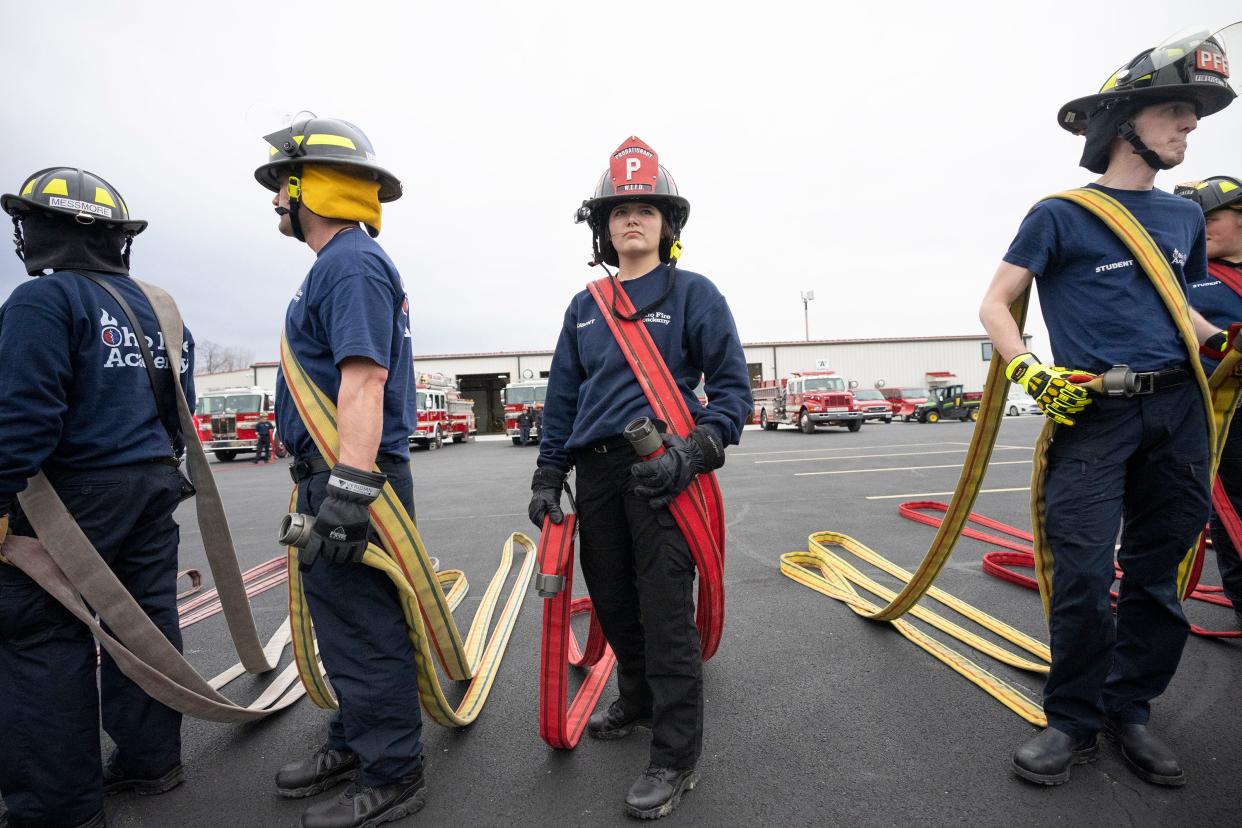
Concord Green Fire Chief Ralph Stegbauer and Captain Jeffrey Skaggs were doing their best to save money at their volunteer fire department in Fayette County.
So they borrowed an extended lift from a local farmer on Nov. 25 to install a windsock on a 70 feet tall radio tower so medical helicopters could land in the area. Their effort to do it themselves instead of hiring help turned fatal when the lift tipped over and threw Stegbauer and Skaggs to their deaths, said Fayette County Sheriff Vernon Stanforth.
The tragedy was one example of how Ohio's 668 volunteer fire departments are often forced to make difficult decisions about how to spend their money, with needs such as protective gear, training and equipment.
"They were trying to save money so they could do other things," Stanforth said. "You're going to find that in every (volunteer) fire station. … In their mind they were actually being a public servant and trying to retrofit the tower with what they needed for the helicopter to be able to land safely and unfortunately, it cost their lives."
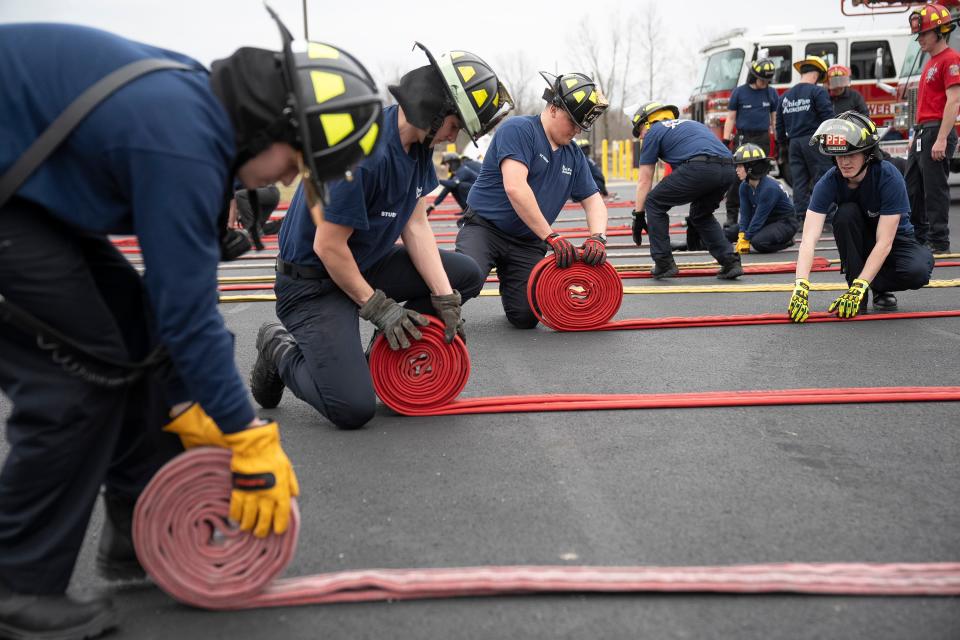
Volunteer fire departments respond to the same types of emergencies as paid, professional firefighters. About 70% of Ohio's fire departments are staffed by volunteers who play a critical role in keeping Ohioans safe.
But in recent years, volunteer departments are responding to more calls with fewer volunteers; have less funding for rising costs; and are required to do more training, according to Ohio State Fire Marshal Kevin Reardon. The cost for a ladder truck without all of the necessary equipment and tools on it can run upwards of $1.5 million, he said.
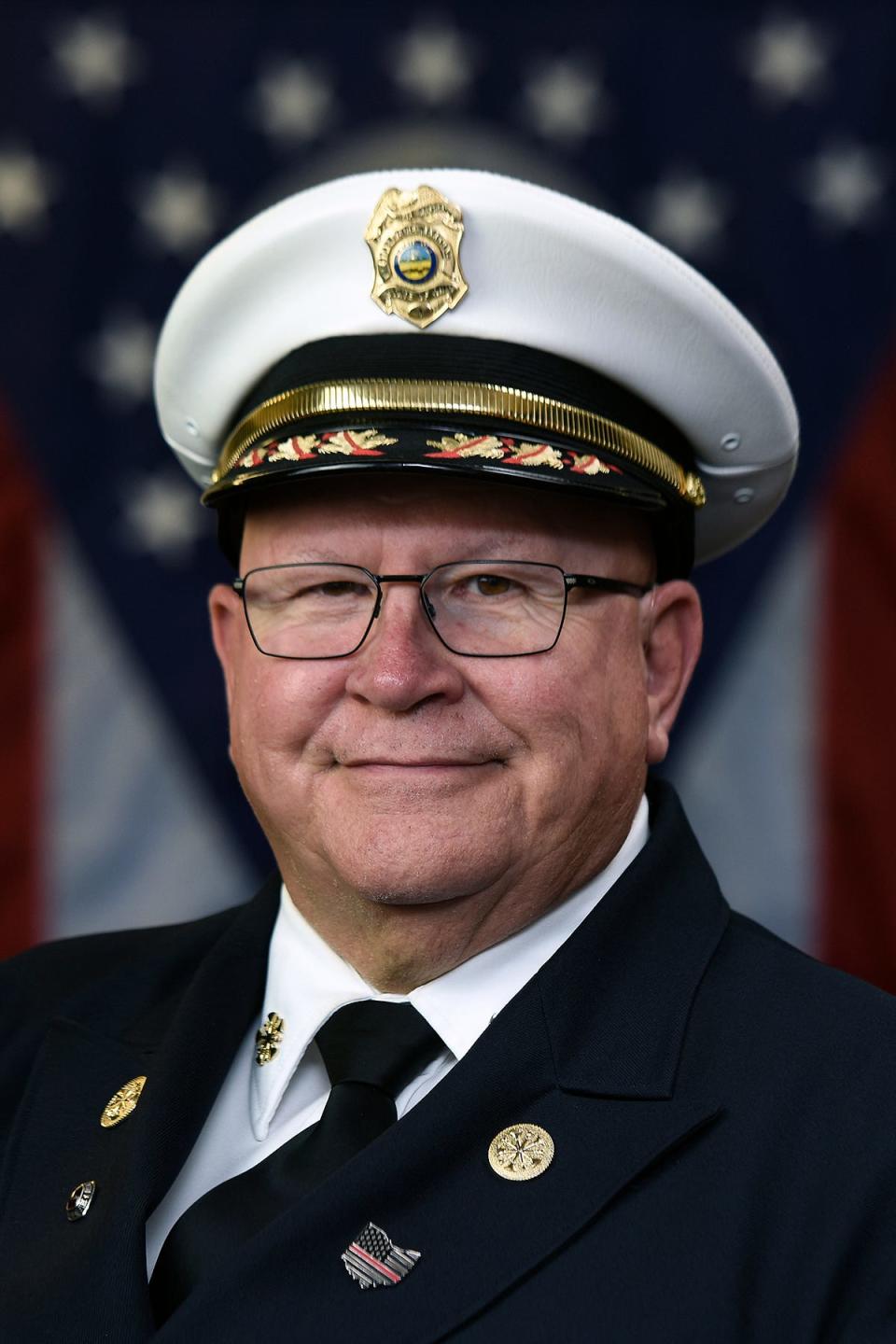
Reardon said volunteer firefighters have to complete at least 36 hours of initial training, get recertified by the state every three years, oftentimes have to buy their own gear and are asked to leave their family, friends and jobs at a moment's notice to go help their communities, often risking their lives to do it.
And, the jobs have gotten more difficult and diverse with volunteers responding to car crashes, medical calls, hazmat incidents and natural disasters.
"It's hard to make that sexy," Reardon said.
'Hanging on by a thread'
It was in his first days as the state fire marshal nearly four years ago that Reardon started to realize that many of Ohio’s volunteer fire departments are “hanging on by a thread.”
He said funding for volunteer departments is a "hodgepodge" of grants, state and local government funding and donations.
From 2018 to 2021, the number of volunteer firefighters in Ohio decreased by 6.5%, according to the state fire marshal’s office, but calls increased by 9% from 2018 to 2020.
This increase shows no signs of slowing.
“We’ve done a really good job of teaching the public how to use 911 to the point where it gets overused and that can have a wear and tear on a volunteer fire department,” said state Deputy Fire Marshal Rick Sluder.
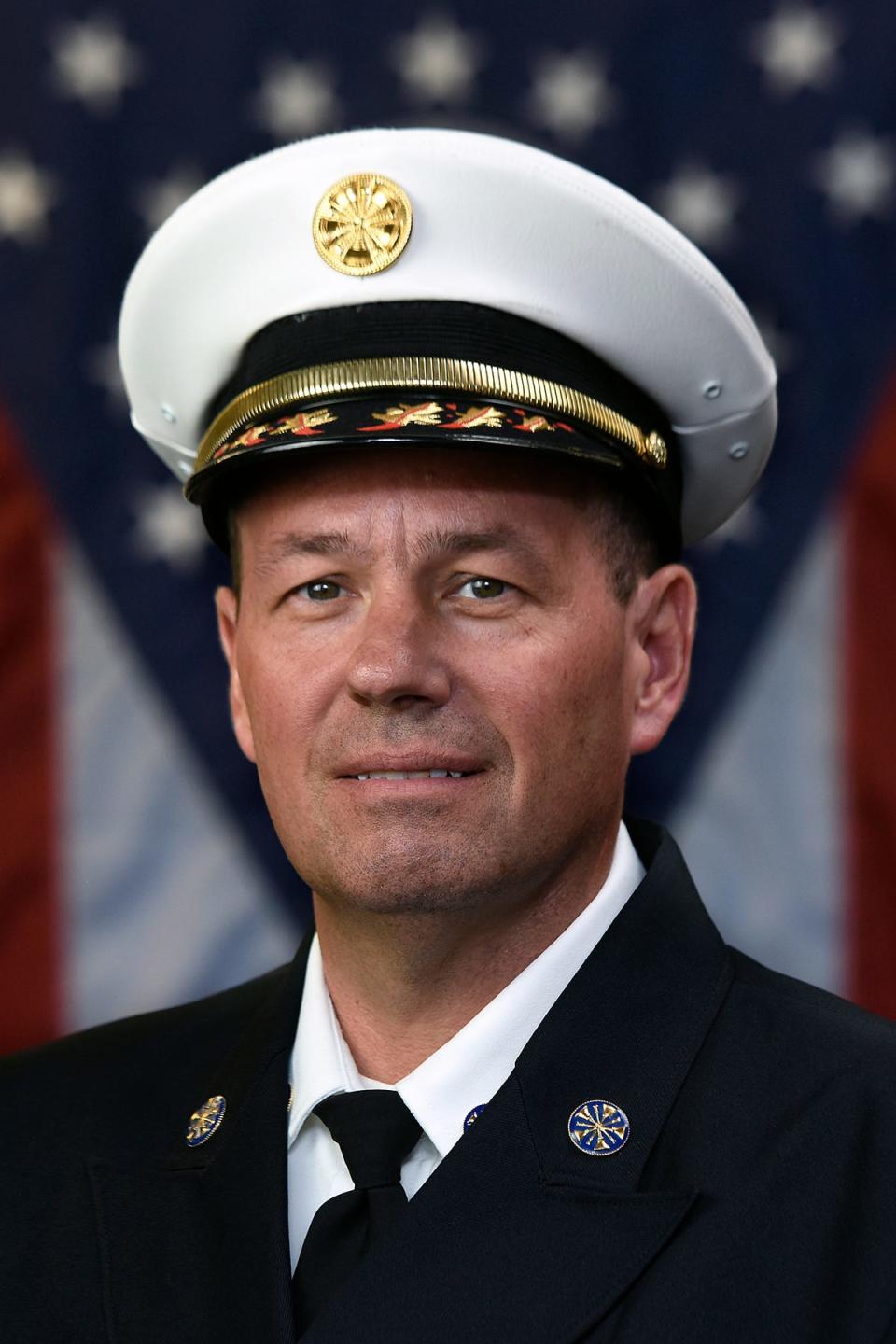
Some volunteer departments in rural areas as well as just outside of city limits have closed because of the challenges, further straining nearby departments and increasing their response times as their coverages areas get larger.
"This is a real issue, and Ohioans need to be concerned, because when these departments start to go away, they're not going to be able to call 911 as easily," Reardon said.
What happens when volunteer departments close?
If a volunteer department does have to close, like Newport Township's recently did in Washington County, another department, likely also volunteer, picks up their area, said Kimberly Quiros, spokeswoman with the National Volunteer Fire Council.
Communities often don't have the tax base to support career departments, she said.
"They really need these volunteers," she said.
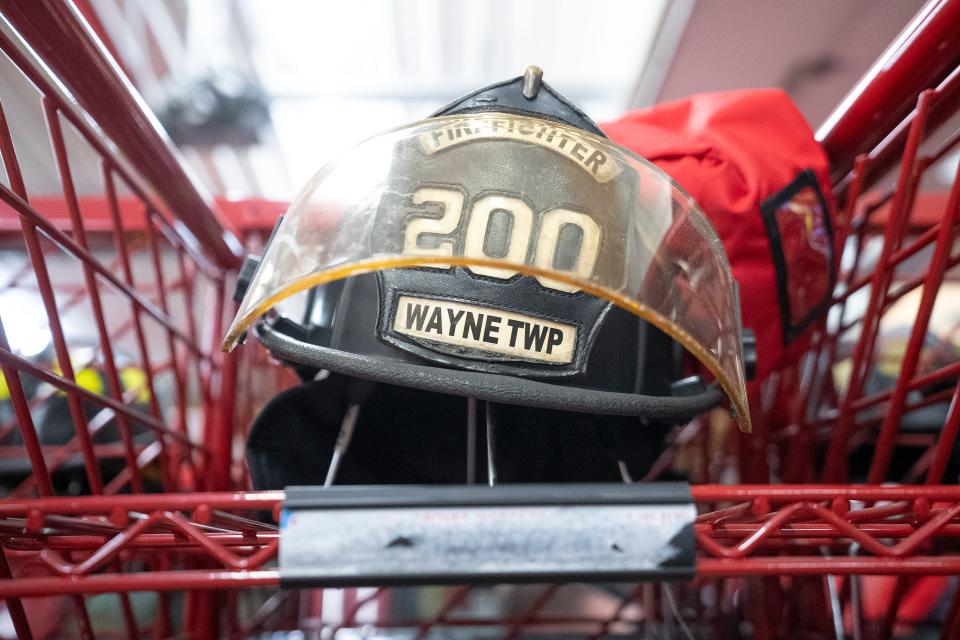
Nationally, communities save more than $46 billion annually due to volunteer fire departments, Quiros said. Volunteers make up 65% of the nation's fire service and about 80% of all fire departments use volunteers, as some departments use a combination of volunteers and career firefighters.
"They're neighbors helping neighbors," Quiros said. "If the community isn't stepping up and helping that department ... you do risk not having enough people to staff that department and that hurts the community."
Volunteer fire departments work on minimal budgets, levy funding
Chief Jon Bradford of the Reno Fire Department in Washington County near Marietta fears his department's funding will never be enough.
He has a fire engine that is 32 years old and needs to be replaced, per federal standards, but also has to replace the fire gear for his 30 volunteer firemen every 10 years, which makes it impossible to save up for a new engine, though he's been trying for 25 years, he said.
Bradford's department gets about $84,000 annually from a levy. But after worker's compensation, insurance, fuel and utility costs, he said there's only about $26,000 left to cover training, turnout gear and unexpected surprises such as a new roof for one of its buildings this year.
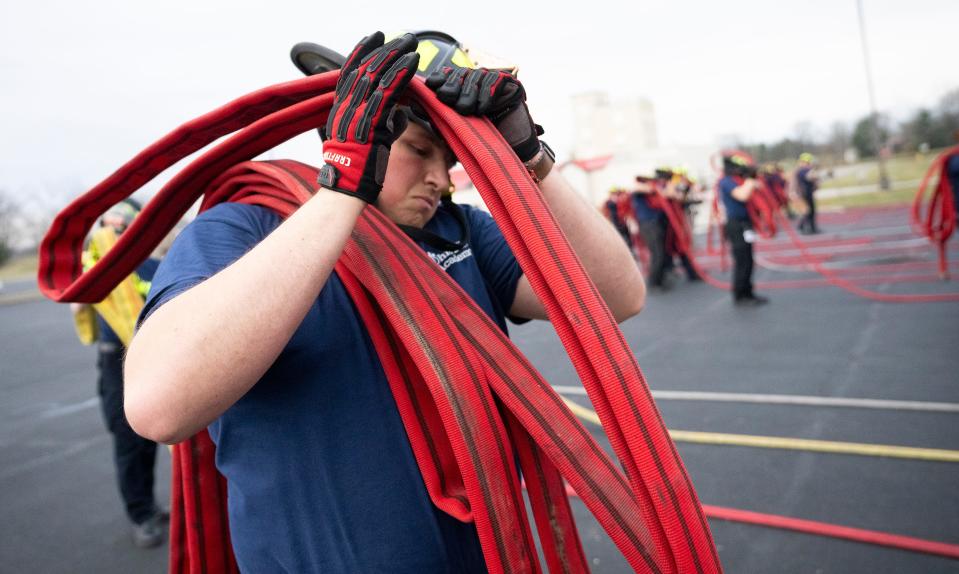
The Reno department can barely afford to cover its own area, but when Newport's department closed, Reno took over serving about 25 square miles of its previous coverage area, with no more funding.
"We're asked to do more with less," he said.
Similarly, with only a $43,000 budget, Chief Chris Wysong, of the Wayne Township Volunteer Fire Rescue in Fayette County, has had to get creative to serve the 2,700 residents in his coverage area.
"If I can save money and my mechanic can fix something on the truck, we do that," Wysong said. That's because outfitting one firefighter in all the safety gear costs about $19,335, nearly half the department's budget.
In order to keep the department running, Wysong said he applies for state and federal grants and requests funding from township trustees. The hours he puts into trying to do this while running the department means he's almost working a second full-time job on top of his primary work full-time with the Ohio Army National Guard. And his department is lucky enough to have a levy, unlike some others.
Gov. Mike DeWine, Ohio Fire Marshal start task force
In 2022, Gov. Mike DeWine and Reardon put together a Governor’s Volunteer Fire Service Task Force, which released a report and recommendations to help volunteer departments survive and thrive.
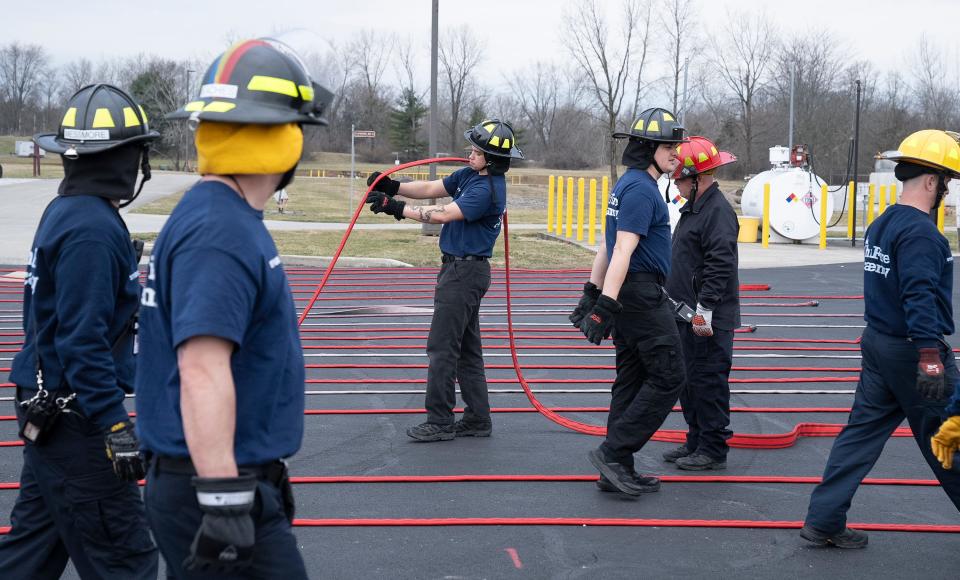
The state now offers free training for volunteer departments so individuals can get the necessary 36-hour training required to become a volunteer firefighter without the potential cost of $500 to $1,000.
The State Fire Marshal's Office also increased grants to departments for training, gear and equipment; updated its online training system to make it more accessible; and created ads to help with the recruitment of volunteer firefighters. It also added a volunteer coordinator to help departments find volunteers and other resources.
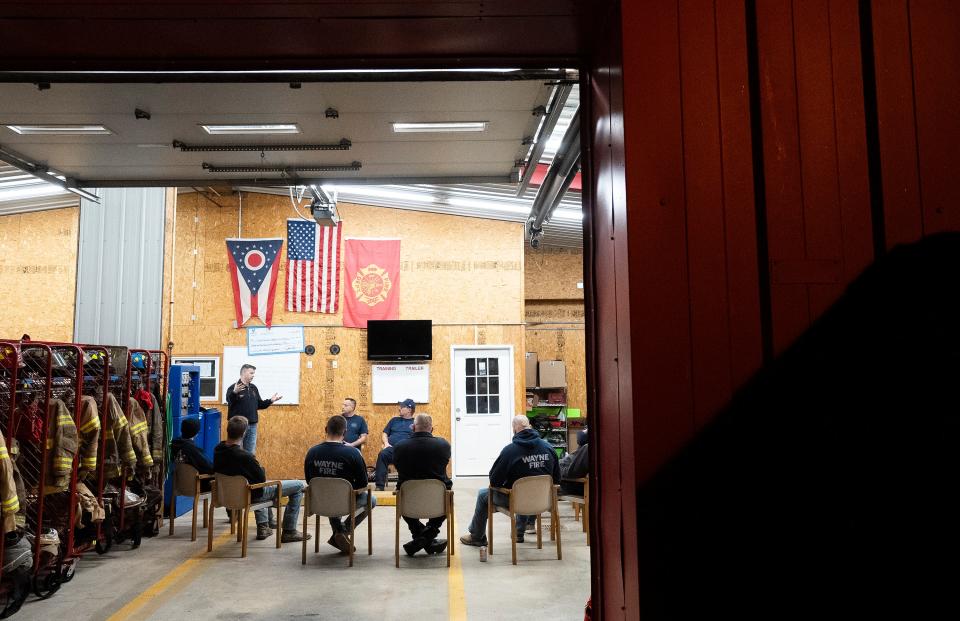
But much more still needs to be done, Reardon said.
One of the newly created grant programs, for instance, had $4 million in funding available to replace the radio systems departments use but received $10 million in requests, he said.
"We've done these little things, but this report is full of a whole lot of other things that legislators need to look at," Reardon said. "There's not a single legislator in Ohio that doesn't have at least one volunteer fire department in their district."
Is everyone too busy to be volunteer firefighters?
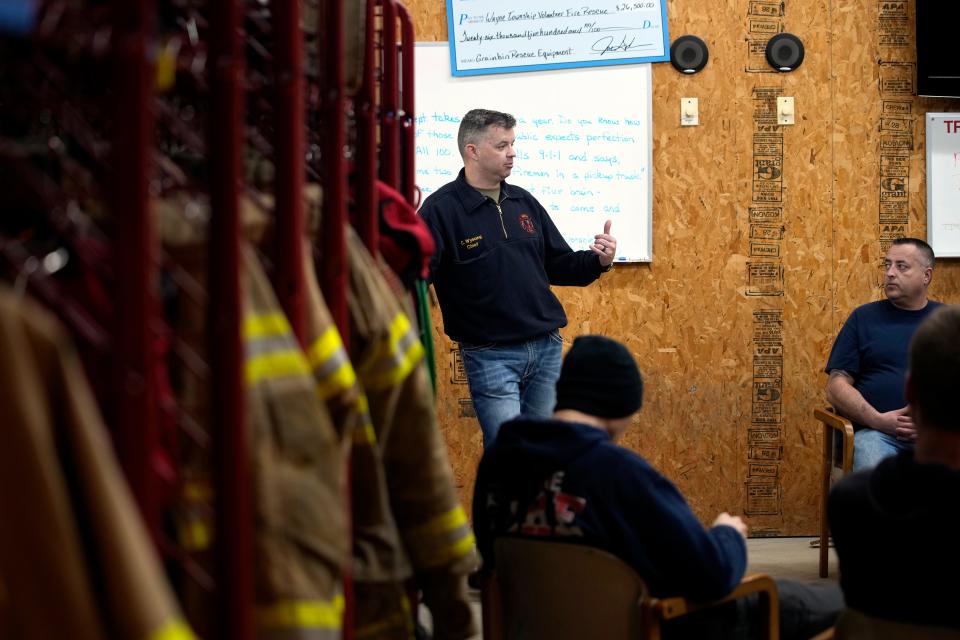
Farmers used to fill much of the ranks of volunteer departments because they could easily stop what they were doing and help, Sluder said.
But times have changed, and those farmers have retired and replacing them has been difficult.
"Everyone's too busy," Wysong said, of why people aren't volunteering as much as they used to.
Children's sporting events, commuting to work outside of the area and other obligations make it hard for people to drop everything when someone needs help, Sluder said.
Volunteer firefighters need flexibility in their full-time work so they can go out on fire runs, Sluder said. And manufacturing jobs, which have become a prevalent industry in rural areas, don't offer that kind of flexibility.
When it comes to recruiting, it 'runs in the family'
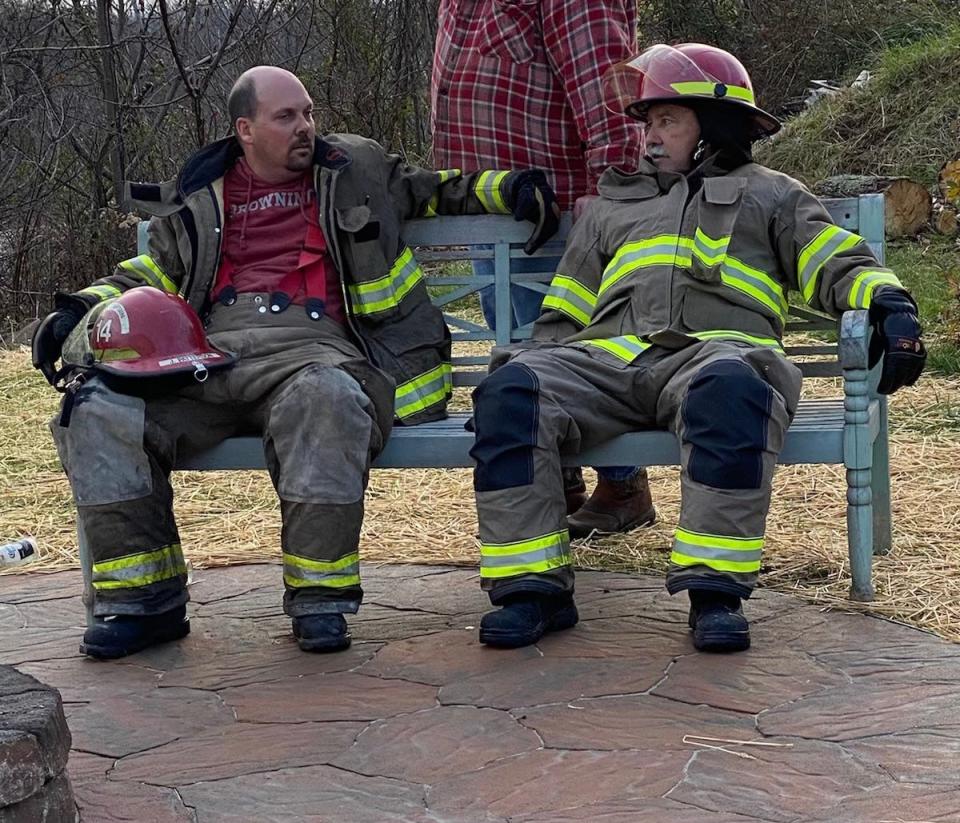
Volunteer firefighting runs in the family for many.
Five new firefighters just joined the Reno Fire Department, and all are related to current members, Chief Bradford said.
Twenty-three-year-old Spencer Crone joined the department late last year. His grandfather, Ted Patterson, and uncle, Jeremy Patterson, have been on the department for a combined 77 years.
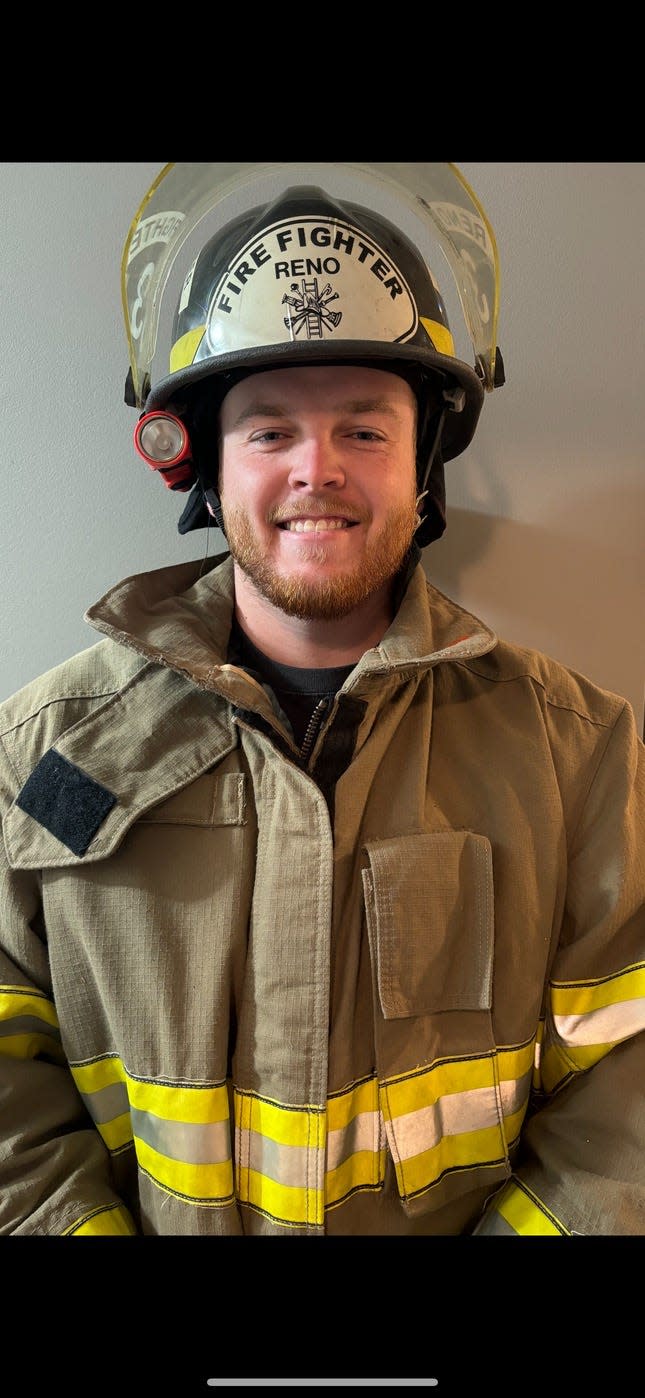
"Just growing up seeing them always doing stuff with the fire department and hearing the stories that they tell," Crone said, was enough for him to want to do it, too. "I've always wanted to be a part of something like a brotherhood, and I always like to help people, too. That just kind of runs in the family."
Though it's nice to have several new volunteers — they're the first new recruits in at least six or seven years — paying for their new gear has been difficult, Bradford said.
Volunteer firefighters are 'all about the community'
Many people may not know they are served by a volunteer department because the volunteers are so professional, Reardon said.
But of the estimated 1,041,200 firefighters across the country, 676,900 or 65% are volunteers, according to the National Volunteer Fire Council.
It's not a job for everyone, Reardon said.
"It's high energy, exciting and dangerous," he said.
It can also be rewarding to serve your community on what are often the worst days of their lives, he said.
Eric Stegbauer, 47, of Greenfield, always knew his late father Ralph was a different breed and had a servant heart.
"Dad was just super, super — always had been — all about the community," he said of his father who had volunteered with Concord Green Fire for 48 years before his death.
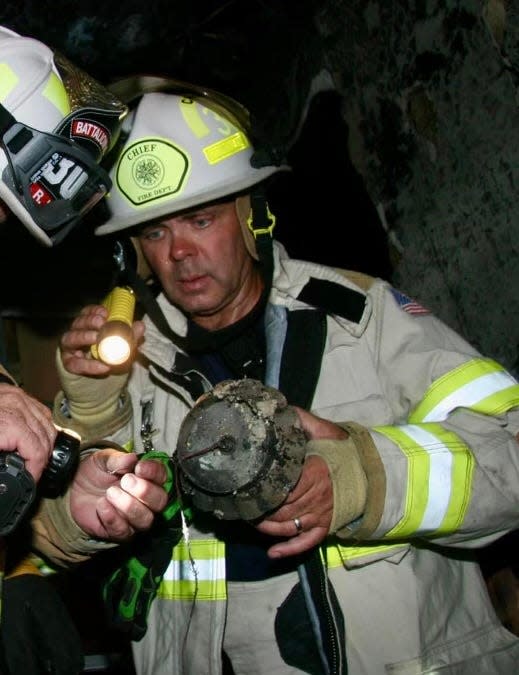
He said people often ask him why he never volunteered as a fireman like his dad.
"I don't have that in me," he said. "The people that do it are special."
He said his dad and Skaggs fell to their deaths "trying to make the department better."
"We take it for granted every day," he said, of what volunteer firefighters do. "In my mind, they should be looked upon as some of the most respected people in your community."
For more information on how to join a volunteer fire department near you, visit www.makemeafirefighter.org/
dking@dispatch.com
@DanaeKing
This article originally appeared on The Columbus Dispatch: Ohio's volunteer firefighter shortages are a crisis for 70% of Ohioans

